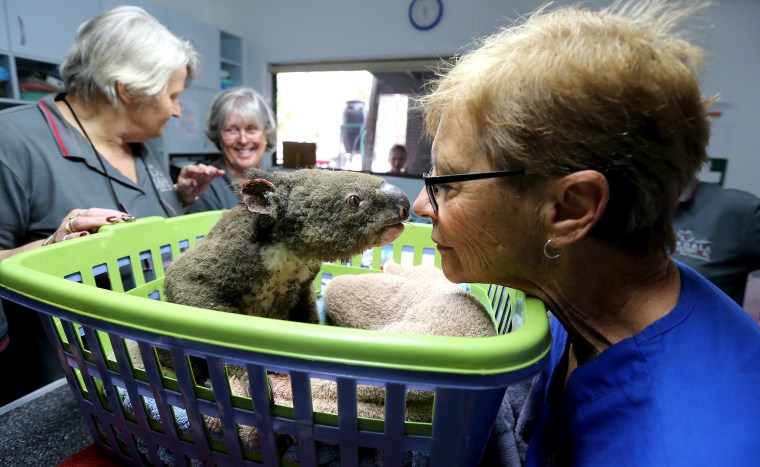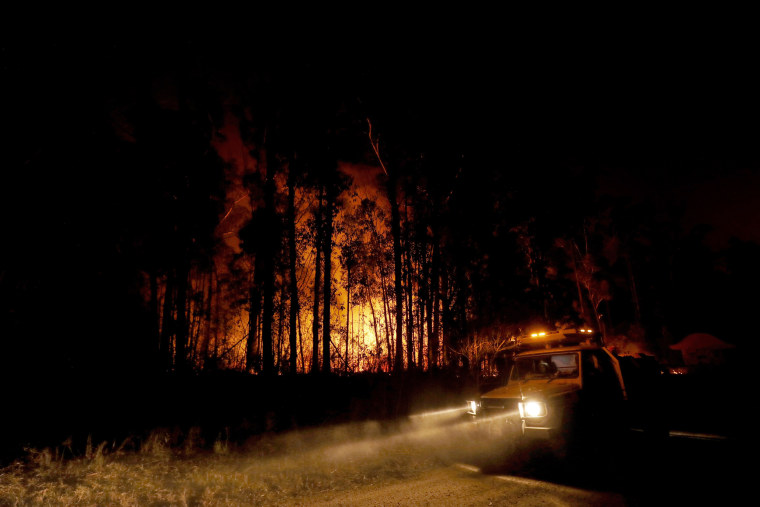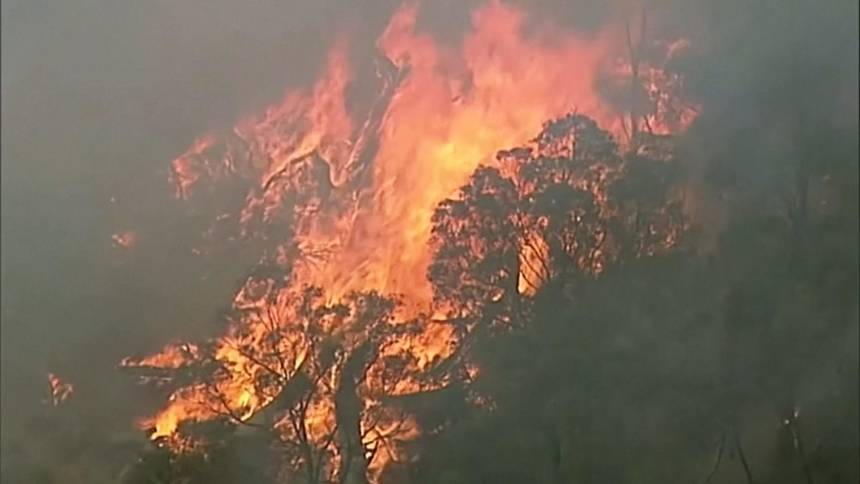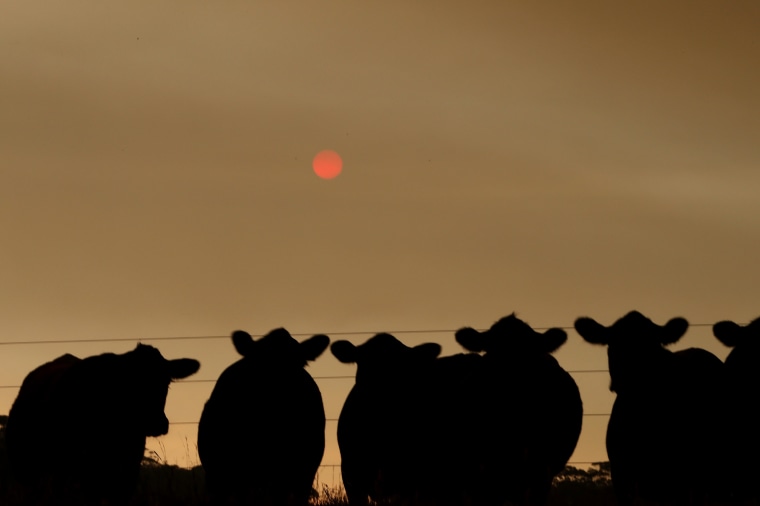Australia's fires could change the country forever
Wildfires are a part of the natural rhythms of Australia’s environment. But scientists haven’t seen anything like this before.
 Sheila Bailey, Judy Brady and Clinical Director Cheyne Flanagan tend to a koala named Paul from Lake Innes Nature Reserve as he recovers from burns at The Port Macquarie Koala Hospital on Nov. 29, 2019 in Port Macquarie, Australia. Nathan Edwards / Getty Images
Sheila Bailey, Judy Brady and Clinical Director Cheyne Flanagan tend to a koala named Paul from Lake Innes Nature Reserve as he recovers from burns at The Port Macquarie Koala Hospital on Nov. 29, 2019 in Port Macquarie, Australia. Nathan Edwards / Getty ImagesBy Denise Chow
NVC NEWS
Wildfires are a part of the natural rhythms of Australia’s environment. But scientists haven’t seen anything like this before.
The country is grappling with some of the worst wildfires in its history. At least 12 million acres of land have already been scorched and more than 100 blazes are still active — and the season has yet to reach its peak.
The blazes threaten to reshape Australia’s ecology even in places where plants and animals have adapted to yearly fires.
“If species are adapted to one set of climatic conditions and are now being forced to regenerate in climatic conditions that are very different, it’s going to be a lot harder to come back,” said Camille Stevens-Rumann, an ecologist at Colorado State University in Fort Collins, who focuses her research on how ecosystems recover after major disturbances.
 Emergency crews monitor a fire burning between the towns of Orbost and Lakes Entrance near Mallacoota, Australia, on Jan. 2, 2020.Darrian Traynor / Getty Images
Emergency crews monitor a fire burning between the towns of Orbost and Lakes Entrance near Mallacoota, Australia, on Jan. 2, 2020.Darrian Traynor / Getty ImagesThe impact of these fires is also providing a stark warning about the kinds of natural disasters that can be exacerbated by climate change, which is lengthening wildfire seasons in Australia, according to Sarah Perkins-Kirkpatrick, a climate scientist at the Climate Change Research Centre at the University of New South Wales in Sydney.
“It’s really shocking and really horrible and as much as I hate to say ‘I told you so,’ climate scientists have been warning about this for a very long time — especially in Australia,” she said. “We knew that if we have drought and a heat wave, the whole country is a tinderbox. We knew it was going to happen.”
She said the biggest wildfires of the season typically break out in January or February, rather than in the spring.
These earlier-than-usual blazes could portend a worrisome trend that is echoed around the world.
“If you look at places like Portugal and Spain, they are seeing fires during the year when they didn’t historically see them,” Stevens-Rumann said. “In California, it’s hard to find a month where there isn’t a bad fire. This is one of those big concerns with climate change, that these fires are going to continue to be an issue.”

The ability of animals to recover from Australia’s wildfires is also a concern. Scientists are estimating that more than half a billion animals have already died in the fires, a figure that Stuart Blanch, a forest and woodland conservation policy manager at the World Wildlife Fund-Australia, called conservative.
The estimate, based on the findings of a 2007 WWF-Australia report by Chris Dickman, a professor of ecology at the University of Sydney, noted that human activities — including the bulldozing of forests and other deforestation practices — had already taken a toll on many species.
Blanch said animals generally recover over the subsequent years and decades, but he added that Australia has not dealt with fires of this size and intensity before, and there are concerns that entire species or subspecies will be wiped out.
“Ecologists have much lower confidence that wildlife populations — particularly the 1,000 threatened species across the continent — will recover from such widespread and utter forest devastation,” he told NBC News in an email.
Climate change is adding further chaos to the system. As the planet warms and sea levels rise, some natural habitats are being permanently altered, outpacing the ability of plants and animals to adjust.
by TaboolaSponsored Stories
 Cattle under smoke-filled skies in eastern Gippsland on Jan. 2, 2020.Darrian Traynor / Getty Images
Cattle under smoke-filled skies in eastern Gippsland on Jan. 2, 2020.Darrian Traynor / Getty ImagesBlanch said it has been tough watching the catastrophic fires play out in Australia. “It is like a punch in the guts, nearly every day,” he said. “But I continue to have hope, and do not give into despair.”
Some plants, such as the eucalyptus trees native to Australia, grow back quickly after wildfires. Within weeks of a blaze, eucalyptus can sprout green leaves almost miraculously from blackened trunks, Stevens-Rumann said.
“Wildfires have been a part of the Earth’s ecosystem since there was plant material to burn,” she said. “We’re all adapted to a certain amount of disturbance. I can get a certain number of colds per year and be OK, but if I’m sick for eight months in a row, that’s really going to wear on me. That’s the same thing with an ecosystem.”